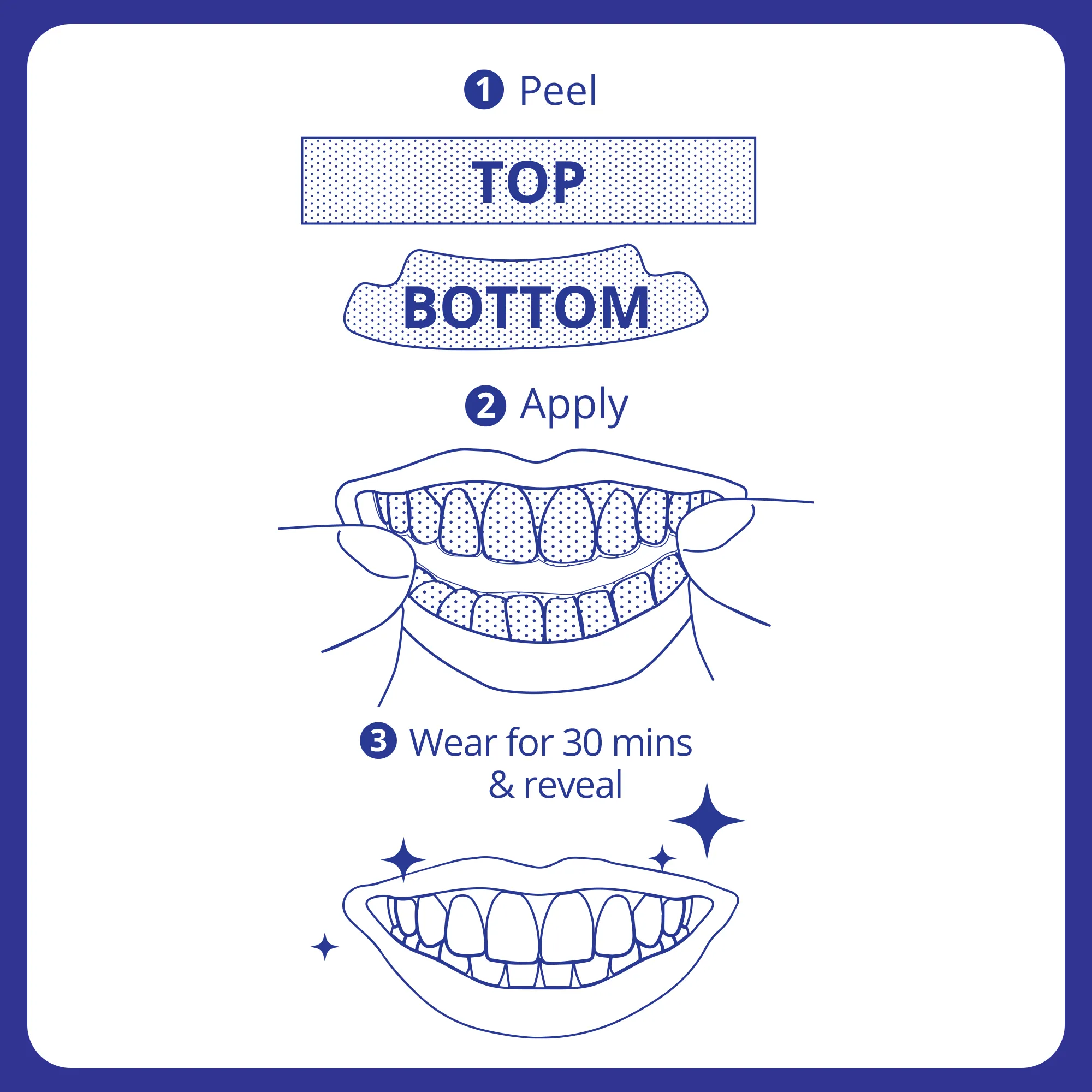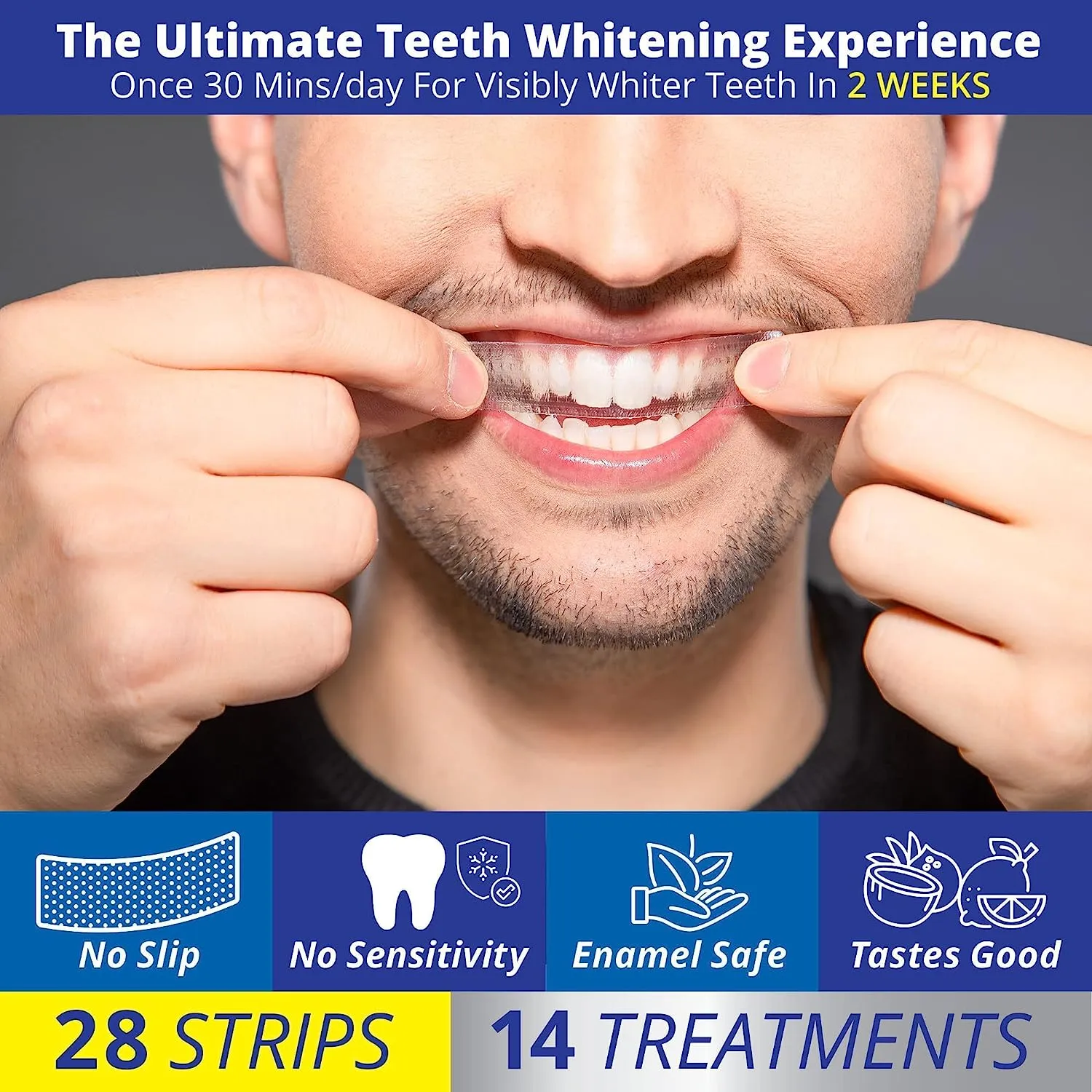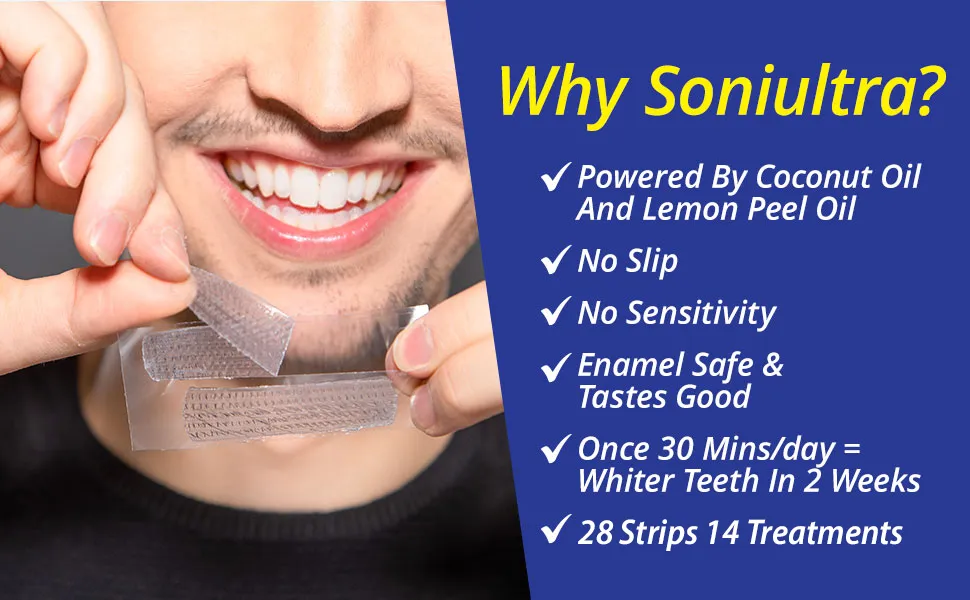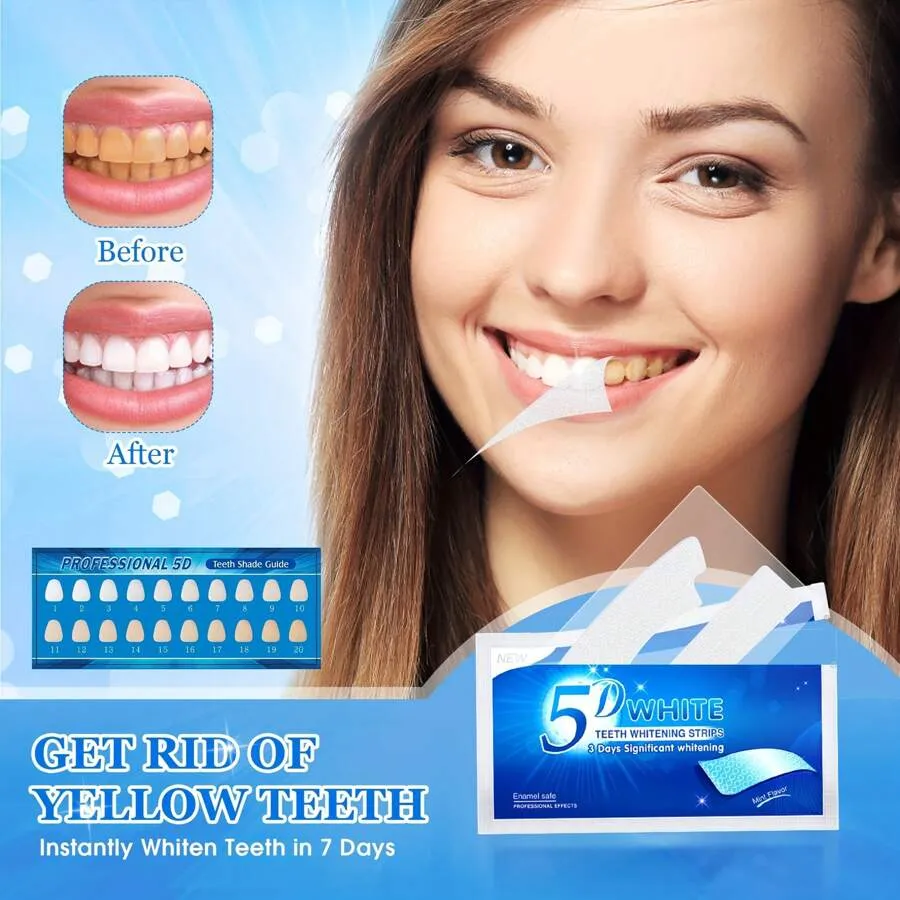Why Whitening Strips Cause Tooth Sensitivity
Many people experience tooth sensitivity when using whitening strips. This common side effect can range from mild discomfort to sharp, shooting pains. Understanding why these strips can cause such sensitivity is crucial for anyone considering teeth whitening. The primary reason boils down to the interaction between the active ingredients in the strips and the delicate structures of your teeth and gums. Several factors contribute to this issue, including the concentration of the whitening agent, the method of application, and the individual characteristics of your oral health. This article dives deep into the science behind tooth sensitivity and how whitening strips play a role. We will look into the causes of sensitivity, and how to deal with them.
The Science Behind Tooth Sensitivity
Tooth sensitivity is essentially the pain or discomfort that arises from stimuli that wouldn’t normally cause a reaction, such as cold air, hot food, or sweet substances. This happens because of exposed dentin, the layer beneath the enamel that contains tiny tubules leading to the tooth’s nerve. When these tubules are exposed, external stimuli can more easily reach the nerve, causing a painful sensation. Whitening strips can exacerbate this condition through their chemical action and their interaction with the natural defenses of your teeth. It’s critical to understand these underlying processes to appreciate how whitening strips contribute to this sensitivity and what steps you can take to mitigate the effects.
How Whitening Strips Work

Whitening strips typically use a chemical called hydrogen peroxide (or carbamide peroxide, which breaks down into hydrogen peroxide) to bleach stains from your teeth. These strips are designed to adhere to the surface of your teeth, delivering the whitening agent directly. The process involves the peroxide molecules penetrating the enamel and dentin to break down the stain-causing compounds. However, this same process can also impact the structural integrity of your teeth and irritate your gums, leading to sensitivity and discomfort. The strength of the peroxide and the duration of its contact with the teeth are critical factors in both effectiveness and potential side effects.
The Role of Hydrogen Peroxide
Hydrogen peroxide is the active ingredient responsible for teeth whitening. Its bleaching action works by releasing oxygen molecules that break down the stains that have accumulated on the enamel. However, hydrogen peroxide is also a strong oxidizing agent, and this is where the problems begin. In high concentrations, it can irritate the soft tissues of the mouth, including the gums, and penetrate the enamel to reach the dentin, where it stimulates the nerve endings. This can cause sensitivity, inflammation, and, in some cases, more severe dental issues. The concentration of the peroxide in the strips and the amount of time they are applied are key factors in determining the intensity of these effects.
Enamel Erosion and Sensitivity
Enamel erosion is a significant factor in the development of tooth sensitivity. The enamel is the hard, protective outer layer of your teeth. When this layer is damaged or thinned, the underlying dentin becomes exposed. Whitening strips, with their active chemical components, can contribute to enamel erosion, increasing the risk of sensitivity. The degree of erosion depends on various factors, including the concentration of the whitening agent, the duration of use, and the individual’s oral hygiene habits. Proper care is essential to minimize the potential for enamel damage and protect your teeth.
What is Enamel

Enamel is the hardest substance in the human body and serves as the protective outer layer of your teeth. It’s primarily composed of minerals, like calcium phosphate, and acts as a barrier against the forces of chewing and the effects of acids and bacteria in the mouth. Enamel is also responsible for the color of your teeth. Its smooth surface reflects light, contributing to the brightness of your smile. The structure of enamel is not uniform; it contains microscopic pores that can allow substances to pass through, making it vulnerable to erosion and the effects of whitening treatments.
How Strips Affect Enamel
Whitening strips can affect enamel in several ways. The hydrogen peroxide in the strips can weaken the enamel structure through demineralization. Demineralization is the process where minerals are lost from the enamel, making it more porous and susceptible to further damage. This can occur if the concentration of the peroxide is too high or if the strips are used for an extended period. The chemicals in the strips can also cause microscopic surface changes that make the enamel more porous, leading to increased sensitivity and a higher risk of staining. It is crucial to use these strips according to the manufacturer’s instructions and consult a dentist if you notice any adverse effects.
Gingival Irritation & Sensitivity
The gums, also known as gingiva, are another area susceptible to irritation from whitening strips. The peroxide can come into contact with the gums, causing them to become inflamed and sensitive. This inflammation can lead to pain, redness, and swelling, making it uncomfortable to brush your teeth or eat. The fit of the whitening strips is critical; if they do not properly conform to your teeth, the peroxide can leak onto your gums. This irritation contributes to overall sensitivity, and it can also lead to more serious issues if the inflammation is chronic. Using strips correctly, and choosing products designed to minimize gum contact, is essential.
Chemical Sensitivity

Chemical sensitivity refers to the reaction of the tooth’s nerve to the whitening agents. The hydrogen peroxide can penetrate the enamel and reach the dentin, affecting the nerves within. This can trigger sharp, sudden pain or a more persistent ache. The severity of this type of sensitivity varies from person to person, depending on factors such as the thickness of the enamel, the health of the gums, and the overall sensitivity of the individual’s teeth. Managing chemical sensitivity often involves reducing the frequency of use or switching to a product with a lower concentration of peroxide.
5 Facts About Whitening Strips and Sensitivity
Here are five key facts to consider about whitening strips and tooth sensitivity, helping you make informed decisions regarding your oral health and whitening treatments.
Fact 1: Hydrogen Peroxide Concentration
The concentration of hydrogen peroxide in whitening strips plays a significant role in the likelihood of tooth sensitivity. Higher concentrations typically result in greater whitening effects, but they also increase the potential for side effects, including sensitivity. Over-the-counter strips generally contain lower concentrations compared to those used in professional dental treatments. However, even these lower concentrations can cause sensitivity, particularly in individuals with pre-existing conditions. Always read the product label and follow the instructions carefully.
Fact 2: Application Time Matters

The duration for which you apply whitening strips also affects the degree of tooth sensitivity. Longer application times increase the exposure of the enamel and gums to the whitening agent. This prolonged contact can lead to greater irritation and a higher risk of sensitivity. Following the recommended application time specified on the product packaging is critical. Exceeding the recommended time, in an attempt to achieve faster results, can increase the risk of sensitivity. Adjusting the application time may be necessary based on individual tolerance levels.
Fact 3: Pre-existing Sensitivity
Individuals who already experience tooth sensitivity are more likely to have issues when using whitening strips. If you’ve previously experienced discomfort from cold, hot, or sweet foods and drinks, using whitening strips may exacerbate these symptoms. This is because the existing condition makes the teeth more vulnerable. Consulting a dentist before using whitening strips is especially important if you have pre-existing sensitivity. They can assess your oral health and advise on whether whitening is appropriate for you, and suggest alternative treatments.
Fact 4: Improper Use
Incorrect use of whitening strips can significantly increase the risk of sensitivity. This includes not following the instructions, using the strips more frequently than recommended, or applying them incorrectly. For instance, if the strips are not properly aligned with your teeth, the whitening agent may come into contact with your gums, causing irritation. Using damaged strips, or strips that are past their expiration date, can also lead to increased sensitivity. Always read the product instructions carefully and contact your dentist if you are unsure about the proper use of the strips.
Fact 5: Individual Variations

People react differently to whitening strips. Factors such as enamel thickness, the health of the gums, and genetics can impact your susceptibility to sensitivity. Some people may experience no sensitivity at all, while others may find the discomfort unbearable. Therefore, it’s important to monitor your response to the treatment and adjust accordingly. Starting with shorter application times or less frequent use, and assessing your tolerance, can help you minimize discomfort and determine the right approach for your teeth whitening goals.
Tips for Minimizing Sensitivity
If you are experiencing sensitivity while using whitening strips, there are several steps you can take to minimize the discomfort. Here are some practical tips that can help you continue to whiten your teeth while reducing your sensitivity, focusing on product choices, application techniques, and after-care.
Choosing the Right Strips
Selecting the right type of whitening strips is the first step in reducing sensitivity. Look for strips with lower concentrations of hydrogen peroxide. Many brands offer a range of products with varying peroxide levels, so you can choose an option that matches your sensitivity threshold. Consider trying a sensitive formula, which is specifically designed to minimize irritation. Additionally, ensure the strips fit your teeth properly, avoiding contact with your gums. Consulting your dentist can help you select the best products, considering your individual oral health needs.
Proper Application Techniques

Correct application is crucial for minimizing sensitivity. Always follow the manufacturer’s instructions carefully, including the recommended application time. Apply the strips only to your teeth, avoiding contact with your gums as much as possible. If the strips extend beyond your teeth, trim them to prevent contact with your gums. Ensure your teeth are dry before applying the strips, as moisture can reduce the effectiveness of the adhesive. Consider applying a small amount of petroleum jelly to your gums before applying the strips to create a protective barrier.
Post-Whitening Care
After using whitening strips, practice proper post-whitening care to soothe your teeth and reduce sensitivity. Avoid consuming very hot or cold foods and drinks immediately after treatment, as they can exacerbate sensitivity. Use a toothpaste designed for sensitive teeth, as these toothpastes contain ingredients like potassium nitrate, which help block the pain signals to the nerves. Avoid acidic foods and drinks, such as citrus fruits and carbonated beverages, as they can further irritate the teeth. Give your teeth time to recover between whitening sessions. If sensitivity persists, consider taking a break from whitening.
When to Consult a Dentist
If you experience significant or prolonged tooth sensitivity, or if the pain is severe and persistent, consult your dentist. They can assess your oral health, identify the cause of the sensitivity, and recommend appropriate treatments. They may also recommend alternative whitening options or provide guidance on managing sensitivity. Your dentist can determine if the sensitivity is related to the whitening strips or if there is an underlying dental issue. They can also provide professional-grade treatments to help you achieve your desired results. Your dentist is your best resource for personalized advice and solutions.
